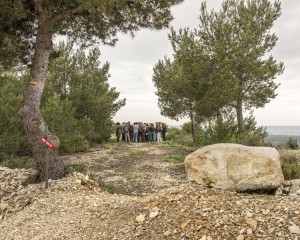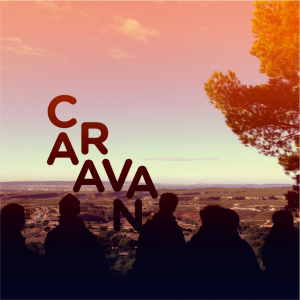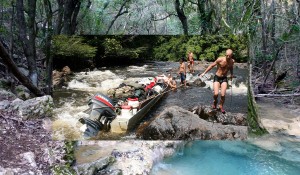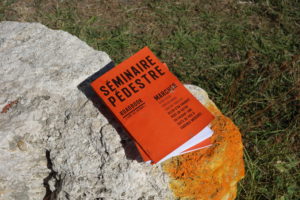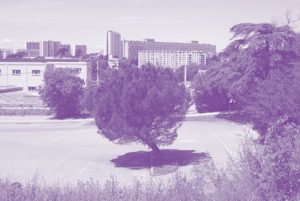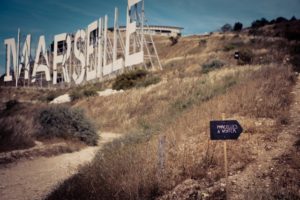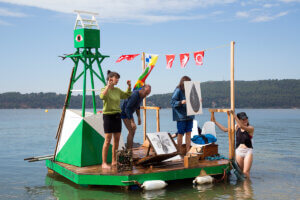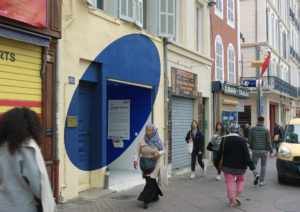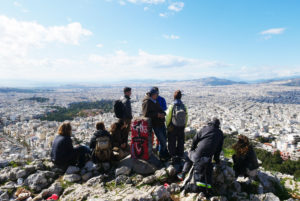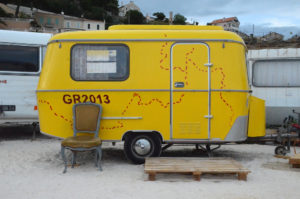
-
Display all projects
The Bureau des guides is the association that brings together walkers, artists, producers, architects and animators associated with the GR2013. We offer you multiple ways to walk away from the metropolitan trail, in order to observe, perceive and know better what surrounds us. The Bureau des guides continues to journey, to invent and recreate itself, in collaboration with local cultural groups, educational and research establishments, local authorities and groups of inhabitants. In inviting you to venture from the GR2013, the Bureau des guides further enriches the trail, collecting stories, creating new communities and learning how we might inhabit our territory together.
The Bureau des guides is the association that brings together walkers, artists, producers, architects and animators associated with the GR2013. We offer you multiple ways to walk away from the metropolitan trail, in order to observe, perceive and know better what surrounds us. The Bureau des guides continues to journey, to invent and recreate itself, in collaboration with local cultural groups, educational and research establishments, local authorities and groups of inhabitants. In inviting you to venture from the GR2013, the Bureau des guides further enriches the trail, collecting stories, creating new communities and learning how we might inhabit our territory together. -
Building conviviality
Hospitality initiatives
Observatories, orientation tables, stops for hikers, animated sections of the path or in scientific observation stations, along the trail the Bureau des guides offer spaces to observe, gather and learn together. Interweaving interventions and constructions, these hospitalities are created both as poetic beacons, along the pathway, and as invitations to “inhabit” a place for contemplation, a nap, a picnic, and even for a night? Between land art, eco-construction and landscape tools, these stops assemble and serve those who pass through, and those who inhabit these places. They challenge us, while gradually building a territorial network, as one vast web of signs and signals. -
Collecting Stories
An outdoor stage for culture
Throughout the year, the Bureau des guides creates a program of activities on the trail and in the municipalities it crosses, with artist-walkers and the public. By partnering with communities, cultural, educational and scientific operators as well as local associations, it offers regular meetings, alongside distinct events in situ. Through walks, conferences, exhibitions, artistic and culinary performances, it invites us to share local stories within the landscape. These gatherings become collective adventures where the experiences and the stories nourish a common culture. -
Forming a community
Co-constructions areas
Walking and exploring helps us develop our “sense of place” and our desire to take care of it. The "Household Zones" are the spaces that the Bureau des Guides wishes to engage with for longer time periods. They are places conducive to questioning our representations and our ways of dwelling in, living between nature and the urban. In seeking to better understand and know the environments in which we live, the Bureau des guides initiates and animates conversations between the various actors: from the inhabitants to the scientist, or the planner. The Bureau des guides mobilises, by forging links, sharing knowledge and supporting local communities in their encounters with an “ecological art” that documents, unites and activates. -
Learning together
A classroom without walls
Walking is a tool for reading landscape particularly suited for those wanting to understand and feel the world around them. Changing posture, being open to other knowledge, to the memory of others, in entering deeply into the physical and historical aspects of a territory, a landscape, an environment. Creating a dynamic and poetic relationship with ones’ everyday movements. The walker is no longer a distant observer but participates in the assemblage through listening, exchange and conversation. The Bureau des guides also augments this territorial knowledge for anyone who wishes to learn more, by sharing situated observations and knowledge. While simultaneously supporting school programs, urban studies, scientific research or new artistic projects.

